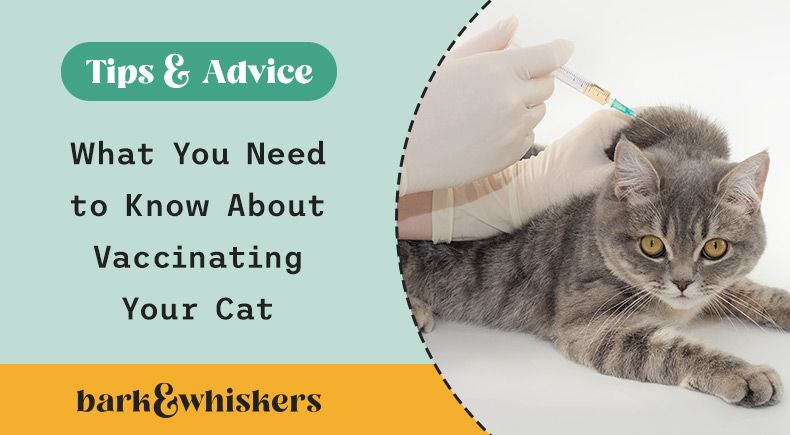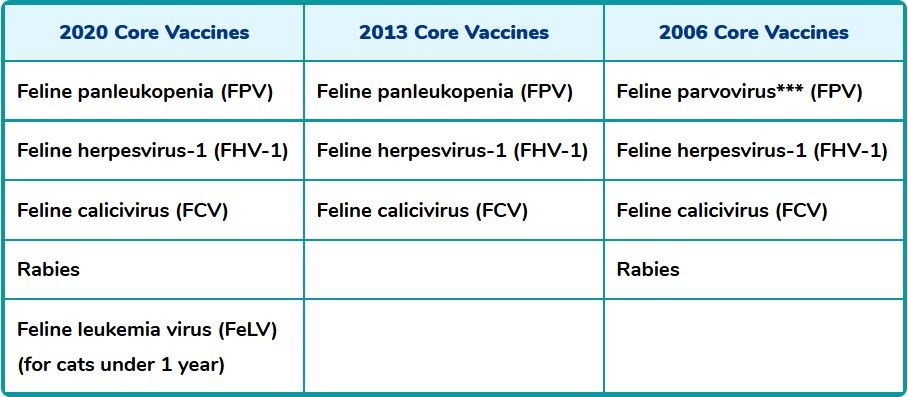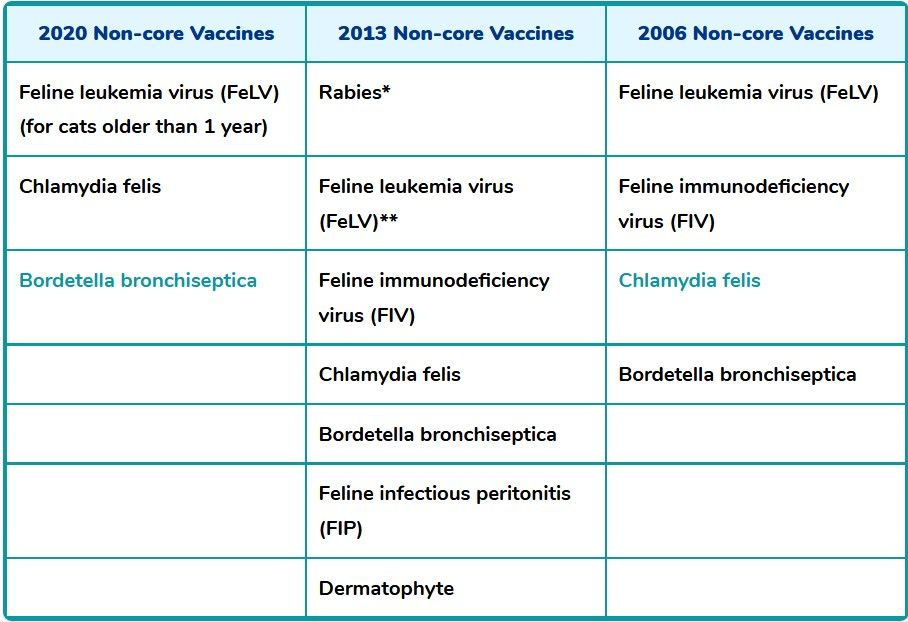What You Need to Know About Vaccinating Your Cat
There was a significant change in 2020 to feline vaccination guidelines, and it's one I don't agree with. I believe their focus is all wrong, and following their recommendations could put your cat at significant risk of one of the worst side effects of vaccines - a tumor that requires amputation.

STORY AT-A-GLANCE
- In 2020, the American Animal Hospital Association (AAHA) and the American Association of Feline Practitioners (AAFP) released updated feline vaccination guidelines
- The most significant change was the addition of the FeLV vaccine as a core vaccine for cats under one year of age; I don’t agree with this recommendation
- The 2020 guidelines, like previous guidelines, are focused primarily on how many vaccinations can be given to cats, and how often; the safer, saner, and more humane approach is to focus on the minimum number and type of vaccines necessary to successfully immunize each animal
- The significant risk of vaccine-associated sarcomas in cats, and the recommended changes in injection locations to facilitate amputations in the event of these tumors, should prompt every veterinarian and cat parent to very carefully assess the wisdom of repeated vaccinations
In 2020, the American Animal Hospital Association (AAHA) and American Association of Feline Practitioners (AAFP) updated their feline vaccination guidelines1 for use by veterinarians. The two previous updates were published in 20132 and 20063.
Core vaccines are those recommended for all cats; non-cores are optional and should be given based on individual exposure risk.


*Vaccination against rabies is essential in regions where it is required by statute/law or where the virus is endemic.
**The Advisory Panel recommends that all cats under one year of age be vaccinated against FeLV and receive a booster vaccination one year later. After one year of age, the need for subsequent vaccination is determined by risk factors that the individual is exposed to.
***Changed from parvovirus to panleukopenia for 2013 (in cats, parvo causes panleukopenia).
The most significant change in the current guidelines is the addition of the FeLV vaccine as a core vaccine for cats under one year of age. I don’t agree with the inclusion of this vaccine as a core vaccine, as it’s often ineffective and has been linked to the development of vaccine-associated sarcomas in cats, also known as feline injection-site sarcomas (FISS).
The 2020 update also provides veterinarians guidance on vaccinating pet cats vs. shelter cats, where on the body injections should be given, the timing of vaccines, and antibody titer tests. Frequency of re-vaccination depends on the age of the cat, the type of vaccine administered and the method of delivery.
My Vaccine Recommendations
In my professional opinion, unfortunately, conventional veterinary vaccine guidelines for both cats and dogs continue to put the focus on how many vaccines can be given and how often.
In my experience, the safer, more responsible, and humane approach is to focus on the minimum number and type of vaccines necessary to successfully immunize individual animals against diseases to which they have reasonable risk of exposure. Examples:
- If your cat lives entirely indoors, I recommend weighing vaccination risks vs. benefits. If she never leaves your home and her exposure to life-threatening infectious diseases is virtually zero, consider foregoing vaccinations altogether. The risk of not vaccinating is that if your kitty is ever accidentally exposed to disease, her immune system will be naïve from having lived entirely indoors and she could become very sick or die.
Generally speaking, however, for careful pet parents who focus on optimizing their cat's overall health and vitality, a cat's indoor-only lifestyle virtually eliminates her risk of exposure to infectious disease. It is my belief over-vaccination is one of the primary reasons the general health of housecats is deteriorating. If you can keep your indoor cat from interacting with any other cats, her risk is nonexistent. - If your cat has disease exposure, I urge you to seek out an integrative veterinarian to care for him. Non-traditional veterinarians who focus on proactive health care are generally more willing to proceed very cautiously in the realm of re-vaccinations and can offer suggestions on vaccine detoxification that conventional vets are simply unaware of.
- Ask for a vaccine titer test (aka antibody titer test) to measure your cat's immunological protection against diseases for which he was vaccinated during his first year of life (his "kitten shots"). You can't add immunity to an already immune pet, so don't keep vaccinating.
If your cat needs a booster of a certain vaccine or a vaccine he's never received, make sure the following criteria applies in each instance: - The vaccine is for a potentially fatal disease (this eliminates many on the list immediately) that has a high prevalence in your area
- Your cat has the opportunity to be exposed to the disease (again, cats who live entirely indoor cats have little to no exposure)
- The vaccine is considered both effective and safe
- If your cat does need a vaccine, ask your veterinarian to provide Thuja, a homeopathic detox remedy that will help neutralize the effects of vaccines other than the rabies vaccine.
- Feline rabies vaccines are required by law in many states.4 I recommend the one-year non-adjuvanted vaccine for cats and ask your veterinarian to provide the homeopathic rabies vaccine detoxifier Lyssin. If your pet is a kitten, ask to have the rabies vaccine given after 4 months of age, preferably closer to 6 months, to reduce the potential for a reaction.
- Do not vaccinate your cat (or any pet) if he has experienced an adverse reaction to a prior vaccine.
With kittens, I recommend a first round of core vaccines before 12 weeks of age, like at 9 to 10 weeks, followed by a second round between 15 and 16 weeks, and a titer test two weeks after the last round to confirm an immune response has been induced.
Achieving immunity is the goal. We can put a lot of vaccines into pets, but if the dog or cat doesn't have a functional immunologic response, it's useless. Which means the animal has received all the toxicity of the vaccines and none of the benefit. The reason for vaccinations is to provide protective immunity against life-threatening diseases.
Injection Site Sarcomas: A Vaccine Risk Unique to Cats
Vaccine-associated sarcomas (VAS) are a type of soft tissue sarcoma that can develop weeks, months, or even years after a vaccination. VAS, also called feline injection-site sarcomas (FISS), are primarily triggered by the feline rabies vaccine and the feline leukemia virus (FeLV) vaccine.
The veterinary community has long been aware of the problem of vaccination-related sarcomas in cats. The majority of the first diagnosed vaccine-related sarcomas developed between the shoulder blades of affected kitties. This is the area of a cat's body where all vaccines were typically injected prior to the mid-1990s.
In 2013, when after years of trying to determine the best areas of the body to vaccinate cats, a team of veterinary researchers published a study suggesting that tail vaccinations could make surgical treatment of vaccine-associated sarcomas easier and less disfiguring, which could in turn encourage more owners to have their cats treated for cancer.
As an integrative veterinarian focused on proactively maintaining wellness in pets, I'm much less interested in which body parts are best for vaccine injections (and subsequent amputation as a treatment for sarcomas) than I am in determining which vaccines an animal truly needs based on established immunity, age, lifestyle, and actual risk exposure.











